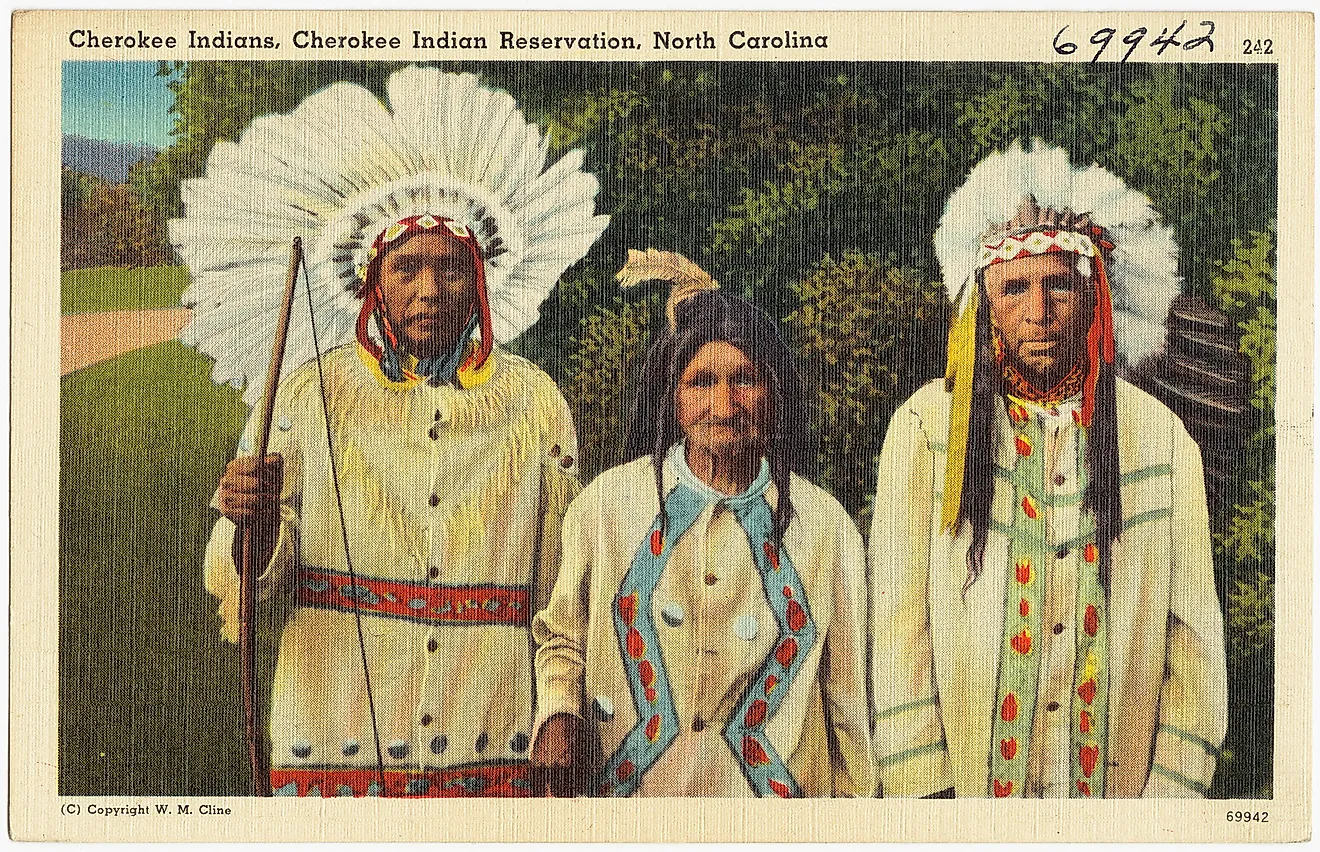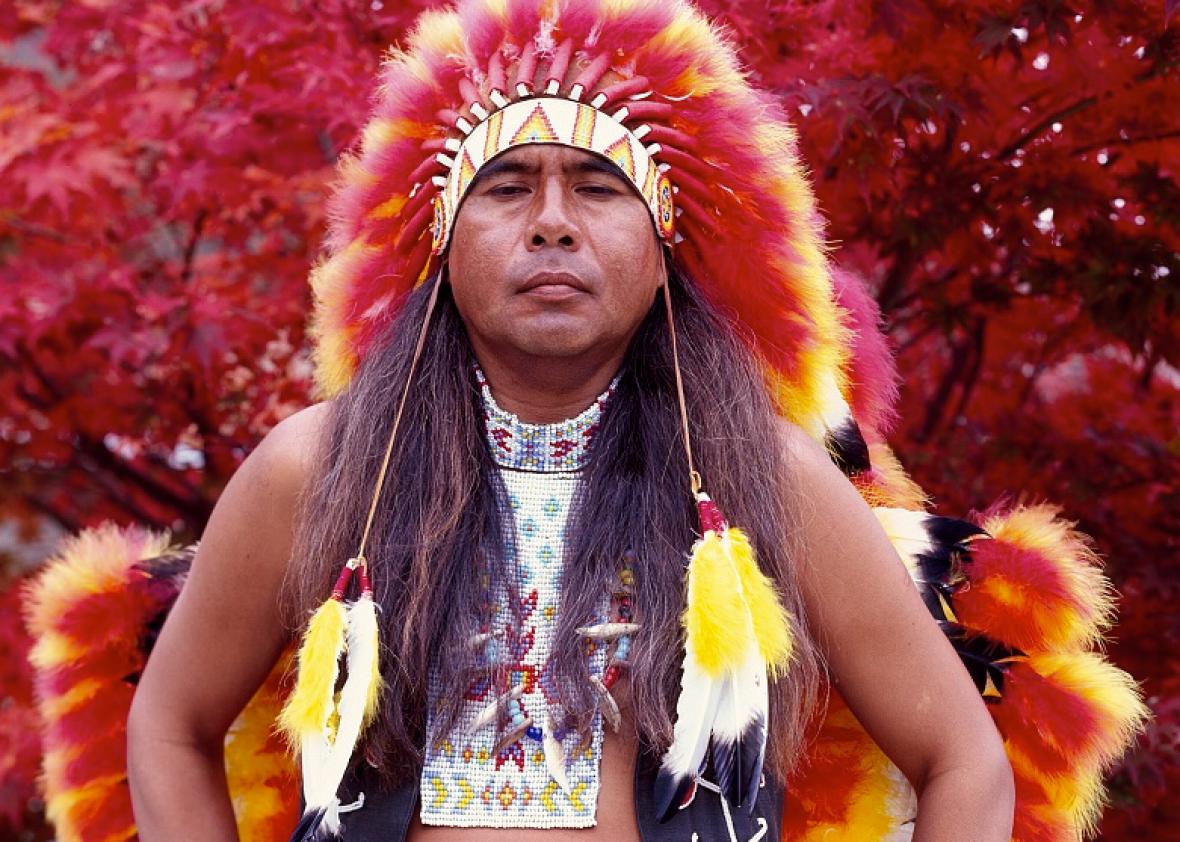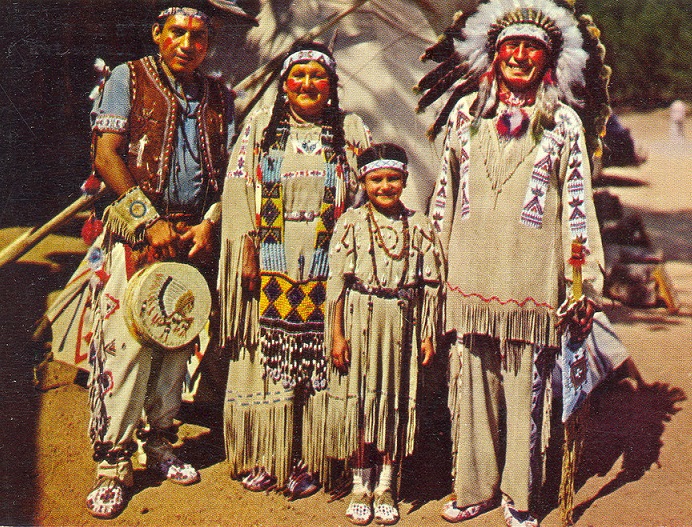It's quite interesting, how the name "Cherokee" pops up in so many different parts of our world, isn't it? You might hear it linked to a particular vehicle, perhaps a Jeep model, with discussions about its engine or new hybrid versions, or maybe even its auto stop/start quirks. But, you know, there is so much more to the Cherokee name than just cars. The name truly belongs to a vibrant, enduring Indigenous people, whose rich history and cultural expressions are deeply meaningful. Today, we're going to explore something truly special: the beautiful and historically significant world of cherokee indian wear. It’s a subject that really tells a story, and it’s a story worth hearing, you see.
Understanding cherokee indian wear isn't just about looking at old clothes; it's about connecting with a living heritage. These garments, past and present, carry the spirit of a people, their connection to the land, their artistry, and their resilience. Every stitch, every bead, and every chosen material speaks volumes about Cherokee identity and their way of life. It’s a way of looking at things that really helps you appreciate the depth of their culture, and that’s pretty cool.
So, we'll take a closer look at what traditional Cherokee clothing was like, what it means for the community today, and how we can all appreciate this cultural expression with respect. It's a journey into a very special part of history and ongoing tradition, and you might find it quite fascinating, to be honest.
Table of Contents
- Cherokee Clothing Through the Ages: A Historical Look
- Elements of Cherokee Traditional Dress
- The Meaning Behind the Wear
- Respectful Appreciation of Cherokee Indian Wear
- Frequently Asked Questions About Cherokee Attire
Cherokee Clothing Through the Ages: A Historical Look
Thinking about cherokee indian wear really takes us back in time, doesn't it? Before European contact, the Cherokee people lived in what is now the southeastern United States. Their clothing was, quite naturally, made from what the land provided. This connection to nature was very important, and you can see it in their attire, too.
Early Traditions and Natural Materials
Early Cherokee clothing, generally speaking, reflected the climate and available resources. People used deer hides, which were softened and sometimes decorated. Women often wore skirts made from plant fibers, like mulberry bark or woven grasses. Men might wear breechcloths, and sometimes leggings, especially for hunting or travel. For warmth, particularly in cooler weather, cloaks made from animal skins or woven materials were common. They really knew how to use what was around them, you know?
The preparation of these materials was a skill passed down through generations. Tanning hides, for instance, was a very involved process that made the leather soft and usable. Plant fibers were gathered, processed, and then woven into various textiles. It was a lot of work, but it showed great skill, and that’s something to admire.
Adapting and Persisting
As time went on, and with the arrival of European traders, new materials became available. Things like cotton cloth, wool, and glass beads started to be incorporated into Cherokee clothing. This didn't mean they abandoned their traditions, though. Instead, they adapted, blending new elements with established styles and techniques. This ability to adapt, yet keep their identity, is a powerful part of their story, too, you see.
Even through incredibly difficult times, like the forced removal known as the Trail of Tears, the spirit of Cherokee culture persisted. Clothing, in a way, became even more important as a symbol of identity and resilience. Families held onto traditional pieces, and the knowledge of how to make them, even when so much else was lost. It’s a pretty amazing testament to their strength, honestly.
Elements of Cherokee Traditional Dress
When we talk about cherokee indian wear, it’s not just one single look. There were different types of clothing for different purposes, and each piece often had a special meaning. It's a bit like how we have different clothes for work, or for going out, but with deeper cultural layers, so to speak.
Clothing for Daily Life
Everyday wear for the Cherokee was practical and comfortable. Women would typically wear long skirts and simple blouses or tunics. Men wore breechcloths, sometimes with leggings, especially when moving through brush or for warmth. Moccasins, made from soft leather, were the usual footwear for everyone. They were designed for walking long distances and for quiet movement, which was very useful for hunting, too.
These daily garments were often unadorned or had simple decorations. The focus was on function and durability. Children wore smaller versions of adult clothing, or sometimes just a simple garment, depending on the weather. It was all very much about being practical for their lives, you know.
Ceremonial and Special Occasion Attire
For ceremonies, dances, or important gatherings, cherokee indian wear became much more elaborate. These special outfits were often vibrant and highly decorated. Women might wear long, flowing dresses made from fine cloth, adorned with intricate beadwork, ribbon appliqué, or shell gorgets. Men’s ceremonial clothing could include decorated shirts, leggings, and sashes, often with feathers or other natural elements. The colors and patterns chosen for these pieces were very intentional, and that’s a significant detail.
These garments were not just beautiful; they were deeply symbolic. They might represent clan identity, personal achievements, or spiritual beliefs. Creating these pieces was a true art form, taking many hours of careful work. It was a way to express who you were and your place in the community, really.
Adornments and Accessories
Beyond the main clothing pieces, various adornments and accessories completed the cherokee indian wear. These included necklaces made of shells, beads, or animal teeth. Earrings, bracelets, and hair ornaments were also common. For example, shell gorgets, which are carved shells worn as pendants, were very important and often depicted meaningful symbols. They are quite striking, honestly.
Headwear was also significant. Men might wear turbans or caps, sometimes decorated with feathers. Women might wear hair wraps or special combs. Sashes, often woven with complex patterns, were used to hold clothing in place or as decorative elements. Each accessory, you see, added another layer of meaning and beauty to the overall look.
The Meaning Behind the Wear
The true heart of cherokee indian wear isn't just in how it looks, but in what it represents. It's about culture, identity, and a deep connection to history. Every piece tells a story, and that’s pretty profound, if you think about it.
Symbolism in Design
Many designs found in traditional Cherokee clothing carry specific meanings. Patterns might represent elements of nature, like mountains, rivers, or animals. Colors also held significance; for instance, white could symbolize peace, while red might represent war or power. The choice of materials, too, could be symbolic, reflecting the spiritual connection to the land and its creatures. It’s all very intentional, and quite thoughtful, really.
Beadwork, in particular, often tells a story through its patterns and colors. These designs are not random; they are passed down, sometimes within families or clans, preserving ancient knowledge and narratives. This means that when you see a piece of traditional cherokee indian wear, you are seeing a piece of their living history, which is truly remarkable.
Preserving Culture Today
Today, cherokee indian wear continues to be a vital part of cultural expression and preservation. Contemporary Cherokee artists and artisans are keeping these traditions alive, often learning from elders and historical examples. They create beautiful pieces that honor the past while also reflecting modern artistry. This ongoing creation is very important for the community, you know.
Cultural events, like powwows and tribal ceremonies, are places where traditional attire is proudly worn. These gatherings are opportunities for people to connect with their heritage, share their artistry, and educate others. It’s a way of ensuring that these traditions continue to flourish for future generations, and that’s a really good thing.
Learning more about Cherokee culture on our site can give you a deeper appreciation for their rich history. And, you might also find it interesting to explore this page about traditional crafts, too. These resources help paint a fuller picture, honestly.
Respectful Appreciation of Cherokee Indian Wear
Appreciating cherokee indian wear means doing so with respect and understanding. It’s important to remember that these are not just fashion items; they are cultural expressions with deep historical and spiritual significance. When we admire these pieces, we should always consider their origin and meaning. It's a matter of showing proper respect, which is just good manners, really.
One key aspect of respectful appreciation is supporting authentic Indigenous artists and businesses. If you are interested in acquiring items inspired by or representative of Indigenous cultures, seek out pieces made by Native artists. This ensures that the creators are compensated fairly and that the cultural integrity of the work is maintained. It helps to keep the tradition alive in the right way, so to speak.
Another important point is to avoid cultural appropriation. This means not wearing traditional Indigenous attire as a costume, or using sacred symbols without understanding their meaning and without permission from the community. True appreciation comes from learning, honoring, and respecting, rather than simply imitating. It's about genuine connection, you know?
For instance, attending cultural events with an open mind and a willingness to learn is a wonderful way to show respect. Listening to community members, asking thoughtful questions, and supporting their efforts to preserve their heritage are all valuable actions. This approach helps to build bridges of understanding, which is really what it’s all about, isn’t it?
For more detailed information about Cherokee history and culture, you can always visit the official website of the Cherokee Nation. They offer a wealth of knowledge and insights directly from the source, which is pretty much the best way to learn, honestly.
Frequently Asked Questions About Cherokee Attire
People often have questions about cherokee indian wear, and that's perfectly natural. Here are a few common ones, and some straightforward answers to help you out.
What did traditional Cherokee people wear?
Traditionally, Cherokee people wore clothing made from natural materials found in their environment. This included deer hides, which were used for breechcloths, leggings, and skirts. Women also used woven plant fibers, like mulberry bark, for skirts and other garments. Moccasins were common footwear, and cloaks provided warmth. It was all very practical for their way of life, you see.
What materials were used in Cherokee clothing?
The primary materials used in traditional Cherokee clothing were animal hides, especially deer, and various plant fibers. These plant fibers could be from mulberry trees, wild hemp, or other local vegetation, which were then spun and woven. Over time, European trade introduced new materials like cotton, wool, and glass beads, which were then incorporated into their designs. So, it evolved a bit, too.
How can one respectfully appreciate Cherokee cultural attire?
To respectfully appreciate Cherokee cultural attire, it’s best to learn about its history and meaning from authentic sources, like tribal websites or museums. Support Indigenous artists by purchasing their work directly. Avoid using traditional attire as a costume, or for fashion without understanding its cultural significance. The key is to show genuine respect and understanding for the culture behind the clothing, which is really quite simple, isn't it?
The beauty and meaning of cherokee indian wear continue to resonate today, connecting past and present. It's a powerful reminder of a people's enduring spirit and their rich artistic heritage. Learning about it, you know, really gives you a new perspective.



Detail Author:
- Name : Sherwood Jacobs V
- Username : laurine.zemlak
- Email : fpouros@kilback.com
- Birthdate : 2006-01-09
- Address : 2270 Justina Extension Apt. 098 Kobefort, ND 58846
- Phone : +1 (952) 958-3812
- Company : Morar PLC
- Job : Bill and Account Collector
- Bio : Veritatis dolorum excepturi ipsum provident. Pariatur veritatis rerum praesentium corporis sit sit. Suscipit officiis nostrum quia. Enim quia culpa ut tenetur eum minima.
Socials
twitter:
- url : https://twitter.com/lexi.jacobs
- username : lexi.jacobs
- bio : Porro similique illum atque vel. Maxime eum ad molestiae facere cum. Cupiditate et voluptatibus omnis libero natus.
- followers : 4828
- following : 1216
facebook:
- url : https://facebook.com/jacobsl
- username : jacobsl
- bio : Qui molestiae qui similique quia eos.
- followers : 3548
- following : 2262
tiktok:
- url : https://tiktok.com/@lexi1222
- username : lexi1222
- bio : Voluptas repellendus aut animi nihil.
- followers : 4196
- following : 295

